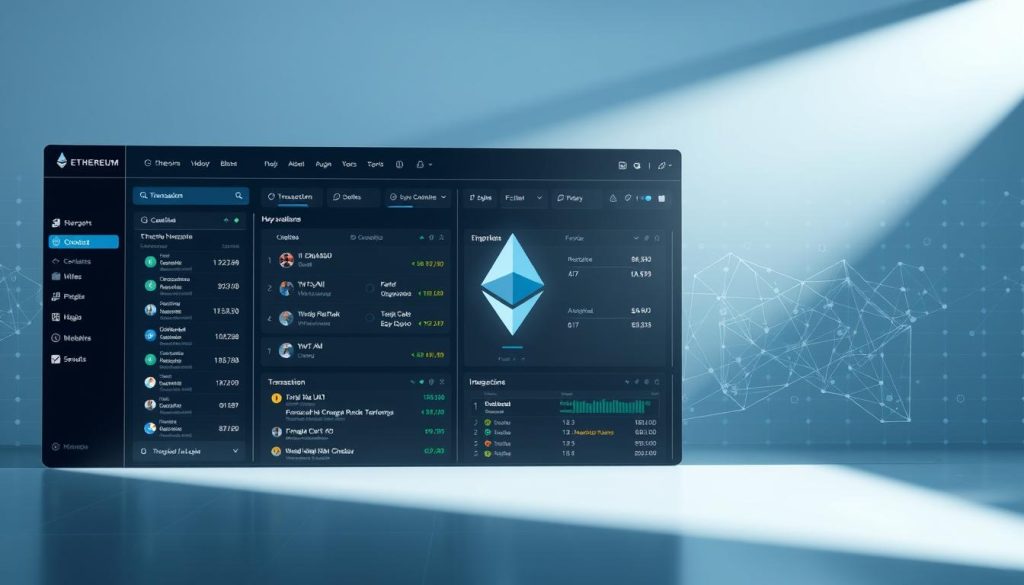Financial systems have operated under centralized control for centuries, with banks, governments, and institutions acting as intermediaries in every transaction you make. That model, while familiar, comes with inherent limitations, high fees, restricted access, and dependence on third-party trust. Decentralized Finance, or DeFi, challenges this paradigm by removing intermediaries entirely and placing financial control directly in your hands through blockchain technology. Since its emergence in 2018, DeFi has grown into a multi-billion dollar ecosystem that offers banking services, lending platforms, and trading capabilities without requiring permission from traditional gatekeepers. Understanding how this technology works and what it means for your financial future isn’t optional anymore, it’s becoming essential as the lines between traditional and decentralized finance continue to blur.
Key Takeaways
- DeFi (Decentralized Finance) removes traditional intermediaries like banks by using blockchain technology and smart contracts to provide financial services directly to users.
- Unlike conventional banking, DeFi offers permissionless access requiring only a digital wallet and internet connection, serving the estimated 1.4 billion unbanked adults globally.
- While DeFi provides transparency, lower fees, and faster transactions, it carries significant risks including smart contract vulnerabilities, regulatory uncertainty, and irreversible user errors.
- Major DeFi applications include decentralized exchanges (DEXs), lending protocols with algorithmic interest rates, and stablecoins that enable price stability in cryptocurrency transactions.
- The future of DeFi likely involves regulatory frameworks, institutional adoption, and integration with traditional finance rather than complete replacement of existing systems.
What Is Decentralized Finance?

Decentralized Finance represents a fundamental shift in how financial services operate. Instead of relying on banks, brokerages, or exchanges to manage your money, DeFi uses blockchain-based applications that execute financial transactions through code rather than human intermediaries.
At its core, DeFi recreates traditional financial instruments in a decentralized architecture, outside the control of companies and governments. You can borrow, lend, trade, earn interest, and more, all without filling out applications or waiting for approval from a loan officer. The system operates on public blockchains, primarily Ethereum, though other networks have emerged as viable alternatives.
What makes DeFi truly different is its permissionless nature. You don’t need a credit score, a minimum balance, or even a formal identity to participate. Your wallet address is your identity, and the smart contracts governing these platforms treat all participants equally. This creates financial access for populations traditionally excluded from banking services while offering alternative options for those dissatisfied with conventional finance.
The total value locked in DeFi protocols has fluctuated significantly, reaching peaks of over $180 billion before market corrections. Even though volatility, the fundamental infrastructure continues to mature, attracting both retail participants and institutional interest.
How DeFi Works
DeFi operates through a combination of blockchain technology and automated code that replaces traditional financial intermediaries. When you interact with a DeFi application, you’re connecting your digital wallet directly to a protocol that executes predefined rules. There’s no customer service representative, no approval process, and no central authority deciding whether your transaction proceeds.
You maintain custody of your assets at all times. Unlike depositing money in a bank where the institution technically owns those funds and promises to return them, DeFi protocols never take possession of your cryptocurrency. You authorize specific actions through your wallet, and the protocol executes them according to its programming.
Transactions settle on-chain, meaning they’re recorded on a public blockchain that anyone can verify. This transparency creates accountability that traditional finance can’t match. You can examine every transaction, audit the code governing a protocol, and verify reserves in real-time, something impossible with conventional banks that operate behind closed doors.
Blockchain Technology and Smart Contracts
Blockchain provides the foundation for DeFi by creating an immutable, distributed ledger that no single entity controls. Every transaction gets recorded across thousands of computers simultaneously, making manipulation or censorship extremely difficult.
Smart contracts are self-executing programs stored on the blockchain that automatically carry out agreements when predetermined conditions are met. Think of them as digital vending machines: you insert the required input, and the contract automatically delivers the output without requiring human intervention.
When you deposit cryptocurrency into a DeFi lending protocol, for example, a smart contract records your deposit, calculates interest in real-time, and allows you to withdraw your funds plus earnings whenever you choose. There’s no loan officer to convince, no paperwork to file, and no waiting period for approval. The code executes exactly as programmed, treating all participants according to the same rules.
This programmability enables financial complexity that would require extensive infrastructure in traditional finance. Smart contracts can interact with other smart contracts, creating composability where DeFi applications stack on top of each other like financial building blocks. You might deposit tokens in one protocol, receive receipt tokens representing your deposit, then use those receipt tokens as collateral in another protocol, all without any platform knowing your identity or requiring permission.
Key Components of DeFi Platforms
The DeFi ecosystem consists of several distinct but interconnected components, each serving specific financial functions. Understanding these elements helps you grasp how decentralized finance replicates and extends traditional financial services.
Decentralized Exchanges (DEXs)
Decentralized exchanges allow you to trade cryptocurrencies directly with other users without surrendering control of your funds to a centralized platform. Unlike traditional exchanges where you deposit assets and trust the company to help trades, DEXs use smart contracts to execute swaps atomically, meaning the trade either completes entirely or doesn’t happen at all.
Uniswap, the largest DEX by volume, pioneered the automated market maker model that replaced traditional order books with liquidity pools. You can trade any supported token pair instantly at algorithmically determined prices based on the ratio of assets in the pool. Slippage occurs on large trades relative to pool size, but there’s no waiting for your order to fill or worrying about whether the exchange will honor your withdrawal.
DEXs also enable you to become a liquidity provider by depositing token pairs into pools and earning a percentage of trading fees. This democratizes market making, a function traditionally reserved for sophisticated financial firms. Your returns depend on trading volume and your share of the pool, though you face risks like impermanent loss when token prices diverge significantly.
Lending and Borrowing Protocols
DeFi lending platforms create money markets where you can earn interest on deposits or borrow against your cryptocurrency holdings. Protocols like Aave and Compound match lenders with borrowers through smart contracts, with interest rates adjusting algorithmically based on supply and demand.
When you deposit cryptocurrency, you typically receive interest-bearing tokens representing your position. These tokens accumulate value over time as borrowers pay interest. Rates vary dramatically depending on the asset and market conditions, sometimes offering returns that exceed anything available in traditional savings accounts.
Borrowing in DeFi requires over-collateralization because loans are trustless and don’t depend on credit checks. You must deposit collateral worth more than your loan value, protecting lenders if you default. If your collateral value drops below the required threshold, the protocol automatically liquidates your position to repay lenders. This removes counterparty risk but limits borrowing capacity compared to traditional unsecured loans.
Stablecoins and Yield Farming
Stablecoins address cryptocurrency volatility by pegging their value to external assets, usually the US dollar. You need price stability to use crypto for everyday transactions or to park funds between trades without exposure to market swings.
Different stablecoin models exist. Some, like USDC, maintain reserves of actual dollars backing each token. Others, like DAI, use over-collateralized cryptocurrency deposits managed by smart contracts. Algorithmic stablecoins attempt to maintain their peg through supply adjustments, though several have failed catastrophically, most notably TerraUSD in 2022.
Yield farming represents the practice of moving your cryptocurrency between different DeFi protocols to capture the highest returns. You might provide liquidity on a DEX, stake the receipt tokens in another protocol, and use those rewards in yet another platform, chaining together multiple yield sources. Returns can be extraordinary during protocol launches when platforms distribute governance tokens as incentives, but they come with significant smart contract risk and often prove unsustainable long-term.
Benefits of DeFi Over Traditional Finance
DeFi offers several compelling advantages over conventional financial systems that have attracted millions of users even though the technology’s relative immaturity.
Accessibility stands as perhaps the most significant benefit. You need only an internet connection and a wallet to access DeFi services. No minimum balance requirements, no credit checks, no discrimination based on geography or economic status. This matters tremendously for the estimated 1.4 billion unbanked adults globally who lack access to traditional financial infrastructure.
Transparency in DeFi surpasses anything possible in traditional finance. Every transaction, every protocol rule, every reserve balance exists on public blockchains that anyone can audit. You don’t have to trust that a bank maintains adequate reserves or follows regulations, you can verify these facts yourself. This transparency exposes bad actors quickly and creates accountability through public scrutiny.
Speed and efficiency improve dramatically when you remove intermediaries. Cross-border transfers that take days and cost substantial fees in traditional finance settle in minutes on DeFi platforms for minimal costs. You’re not waiting for banking hours, dealing with correspondent banks, or navigating complex wire transfer systems. The protocol operates identically whether you’re sending $100 or $100 million, domestically or internationally.
Composability, the ability of different protocols to interact seamlessly, creates financial products impossible in traditional systems. You can build complex strategies by connecting multiple protocols in ways that would require extensive legal agreements and technical integration in conventional finance. This “money lego” approach accelerates innovation because developers can build on existing infrastructure without requesting permission.
Finally, you maintain control and custody of your assets throughout. Traditional finance requires you to trust intermediaries with your money. Banks can freeze accounts, payment processors can decline transactions, and governments can seize funds. DeFi protocols can’t discriminate against specific users or prevent transactions unless that functionality is explicitly programmed into the smart contract. Your keys, your crypto, as the saying goes.
Risks and Challenges in DeFi
Even though its promise, DeFi carries substantial risks that you must understand before participating. These challenges explain why mainstream adoption remains limited and why regulatory scrutiny continues to increase.
Smart contract vulnerabilities represent the most direct technical threat. Bugs in code can lead to catastrophic losses, and once deployed, smart contracts are often immutable. Hackers have exploited protocol vulnerabilities to drain hundreds of millions from DeFi platforms. Even audited code isn’t guaranteed safe, audits identify known vulnerability patterns but can’t catch every potential exploit. You’re trusting the competence of anonymous developers and hoping no one discovers a flaw before it’s patched.
User error causes significant losses in an environment with no customer support or transaction reversal. Send funds to the wrong address, and they’re gone permanently. Forget your wallet password, and you lose access to everything. Sign a malicious transaction approval, and you’ve authorized an attacker to drain your wallet. Traditional finance offers protections against mistakes and fraud: DeFi generally doesn’t.
Regulatory uncertainty clouds DeFi’s future. Governments worldwide are grappling with how to regulate or restrict decentralized protocols. Some jurisdictions have banned certain DeFi activities, while others are developing frameworks to bring protocols under existing financial regulations. You face the risk that regulations could suddenly make your activities illegal or force protocols you’re using to shut down or carry out restrictions.
Liquidity risks emerge when you need to exit positions during market stress. DeFi markets are substantially smaller than traditional financial markets, meaning large transactions can move prices significantly. During crashes, you might find yourself unable to exit positions at reasonable prices, or smart contracts might liquidate your collateral at the worst possible moment.
Scams and rug pulls plague the DeFi space. Because launching a protocol requires minimal oversight, bad actors frequently create fake projects to steal funds. They build what appears to be a legitimate platform, attract deposits, then drain the liquidity and disappear. The anonymous nature of DeFi makes prosecution nearly impossible, and you have limited recourse when you lose funds.
Market volatility affects DeFi uniquely because most protocols operate using volatile cryptocurrencies as base assets. Even stablecoins carry risks, depeg events have occurred multiple times, causing cascading liquidations and losses. The interconnected nature of DeFi means problems in one protocol can rapidly spread throughout the ecosystem.
Real-World Applications and Use Cases
DeFi has moved beyond speculative trading to demonstrate practical applications that solve real financial problems.
Cross-border payments and remittances have found strong product-market fit in DeFi. Workers sending money home to families in other countries traditionally lose substantial amounts to fees and unfavorable exchange rates. DeFi enables near-instant transfers at minimal cost, with recipients able to hold stablecoins that maintain value better than local currencies in economically unstable regions. This use case has driven real adoption in developing markets where traditional infrastructure fails.
Collateralized borrowing allows cryptocurrency holders to access liquidity without triggering taxable events by selling. If you hold Bitcoin that has appreciated significantly, selling creates capital gains tax liability. Instead, you can deposit it in a DeFi protocol, borrow stablecoins against it, and spend or invest those funds while maintaining your Bitcoin position and its potential for future appreciation.
Decentralized insurance protocols have emerged to address DeFi’s own risks. You can purchase coverage against smart contract failures, protecting your deposits if a protocol gets hacked. These insurance markets operate through community underwriting where participants stake capital to back policies and earn premiums, distributing the insurance function rather than centralizing it in traditional insurance companies.
Synthetic assets in DeFi let you gain exposure to virtually any asset, stocks, commodities, currencies, without actually owning the underlying asset. This matters in regions where capital controls or limited access to global markets restrict investment options. You can hold tokenized exposure to US stocks, gold, or foreign currencies through DeFi protocols even if your country’s regulations prohibit direct ownership.
DAO treasuries and organizational finance represent growing DeFi use cases. Decentralized autonomous organizations manage billions in assets through DeFi protocols, earning yield on idle treasury funds and executing financial operations through transparent on-chain voting. This creates new models for corporate finance where stakeholders have direct visibility and input into financial decisions.
The Future of Decentralized Finance
DeFi’s trajectory remains uncertain but undeniably consequential. Several trends will likely shape its development over the coming years.
Regulatory frameworks are emerging globally as governments recognize they can’t ignore this sector. The approach varies dramatically by jurisdiction, some countries are creating favorable environments to attract DeFi innovation, while others are implementing strict restrictions. Your ability to participate in DeFi may depend increasingly on where you live and whether protocols carry out geographic restrictions or identity requirements to comply with regulations.
Institutional adoption is accelerating as traditional financial firms recognize DeFi’s technical advantages. Major banks are experimenting with blockchain settlement, asset management firms are exploring tokenization, and payment companies are building on public blockchains. This institutional involvement brings capital and legitimacy but also threatens to dilute DeFi’s decentralized ethos as regulated entities demand governance control and compliance features.
Scalability improvements through layer-2 solutions and alternative blockchains are making DeFi more accessible. High transaction fees on Ethereum have priced out smaller users during periods of network congestion. Newer technologies reduce costs substantially while maintaining security and decentralization to varying degrees. As these solutions mature, DeFi becomes practical for everyday financial activities rather than only large transactions.
User experience continues improving as interfaces become more intuitive and wallet technology advances. Early DeFi required technical knowledge that excluded mainstream users. Newer platforms abstract away complexity, making DeFi as simple to use as conventional apps. This accessibility will determine whether DeFi remains niche or achieves broader adoption.
The relationship between DeFi and traditional finance will probably evolve toward integration rather than replacement. Tokenized versions of traditional assets, banks offering blockchain-based services, and DeFi protocols connecting to legacy financial rails through regulated intermediaries will likely create a hybrid system combining both models’ advantages.
Conclusion
Decentralized Finance represents more than a technological curiosity, it’s a fundamental rethinking of how financial systems can operate. By removing intermediaries and placing control directly with participants, DeFi addresses legitimate shortcomings in traditional finance while introducing new challenges that can’t be ignored.
Your engagement with DeFi should be measured and informed. The technology offers genuine benefits in accessibility, transparency, and efficiency, but it demands technical competence, risk tolerance, and acceptance that you’re responsible for your own security. There’s no customer service to call when something goes wrong, no deposit insurance to fall back on, and limited legal recourse when you encounter problems.
As the distinction between traditional and decentralized finance continues blurring, understanding these systems becomes increasingly important whether you choose to participate directly or simply want to comprehend how financial infrastructure is changing. DeFi’s ultimate impact won’t be determined by technology alone but by how successfully it addresses real financial needs while managing the risks inherent in removing centralized control.
Frequently Asked Questions
What is DeFi and how does it differ from traditional finance?
DeFi (Decentralized Finance) uses blockchain technology and smart contracts to provide financial services without intermediaries like banks. Unlike traditional finance, you maintain control of your assets, transactions are transparent and recorded on public blockchains, and anyone with internet access can participate without credit checks or minimum balances.
How do smart contracts work in DeFi platforms?
Smart contracts are self-executing programs on the blockchain that automatically carry out agreements when conditions are met. They function like digital vending machines, executing transactions based on predefined rules without human intervention. This eliminates the need for intermediaries while ensuring transparent, consistent treatment of all participants.
What are the main risks of using DeFi protocols?
Key DeFi risks include smart contract vulnerabilities that hackers can exploit, user errors with no recourse, regulatory uncertainty, market volatility, liquidity issues during stress periods, and scams like rug pulls. You’re responsible for your own security, and there’s no deposit insurance or customer support like traditional banks offer.
Can I earn interest on cryptocurrency through DeFi?
Yes, DeFi lending protocols like Aave and Compound allow you to deposit cryptocurrency and earn interest from borrowers. You receive interest-bearing tokens that accumulate value over time, with rates adjusting based on supply and demand. Returns sometimes exceed traditional savings accounts but carry smart contract and market risks.
Do I need a bank account to use DeFi services?
No, you only need an internet connection and a digital wallet to access DeFi. There are no minimum balance requirements, credit checks, or identity verification needed. This makes DeFi particularly valuable for the estimated 1.4 billion unbanked adults globally who lack access to traditional financial infrastructure.
What is the difference between centralized and decentralized exchanges?
Decentralized exchanges (DEXs) let you trade cryptocurrencies directly from your wallet using smart contracts, maintaining full custody of your assets. Centralized exchanges require you to deposit funds and trust the platform to facilitate trades. DEXs like Uniswap use automated market makers instead of order books for instant swaps.










 Bitcoin
Bitcoin  Ethereum
Ethereum  Tether
Tether  XRP
XRP  Wrapped SOL
Wrapped SOL  USDC
USDC  Lido Staked Ether
Lido Staked Ether  TRON
TRON  Dogecoin
Dogecoin